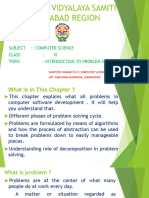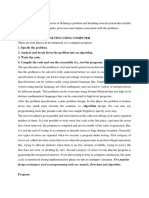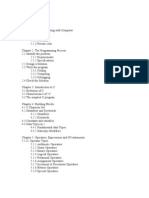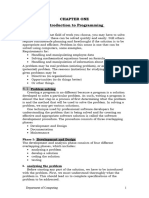0% found this document useful (0 votes)
10 views6 pagesProblem Solving
The document outlines the three basic steps for solving problems using computer programs: analyzing/defining the problem, designing a solution (including algorithm development and coding), and implementing the solution. It explains the importance of algorithms and pseudocode in problem-solving, along with various testing and debugging methods to ensure software reliability. Additionally, it discusses implementation methods and the concept of decomposition to manage complex systems effectively.
Uploaded by
Aditya AkCopyright
© © All Rights Reserved
We take content rights seriously. If you suspect this is your content, claim it here.
Available Formats
Download as PDF, TXT or read online on Scribd
0% found this document useful (0 votes)
10 views6 pagesProblem Solving
The document outlines the three basic steps for solving problems using computer programs: analyzing/defining the problem, designing a solution (including algorithm development and coding), and implementing the solution. It explains the importance of algorithms and pseudocode in problem-solving, along with various testing and debugging methods to ensure software reliability. Additionally, it discusses implementation methods and the concept of decomposition to manage complex systems effectively.
Uploaded by
Aditya AkCopyright
© © All Rights Reserved
We take content rights seriously. If you suspect this is your content, claim it here.
Available Formats
Download as PDF, TXT or read online on Scribd
/ 6





























































































